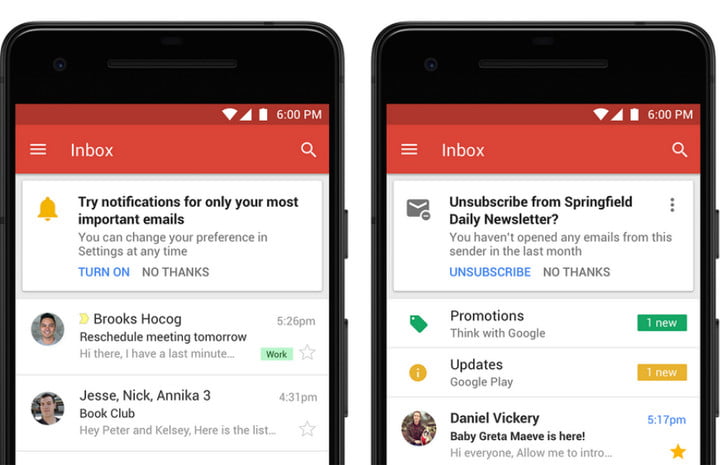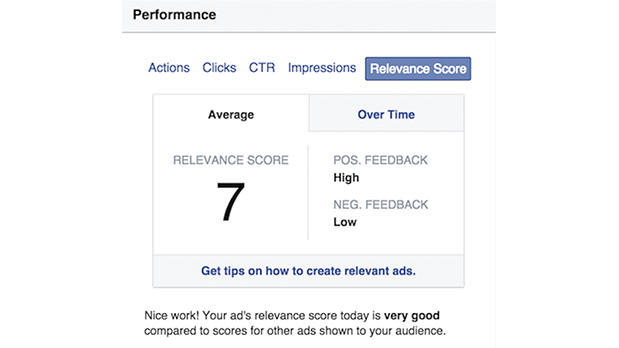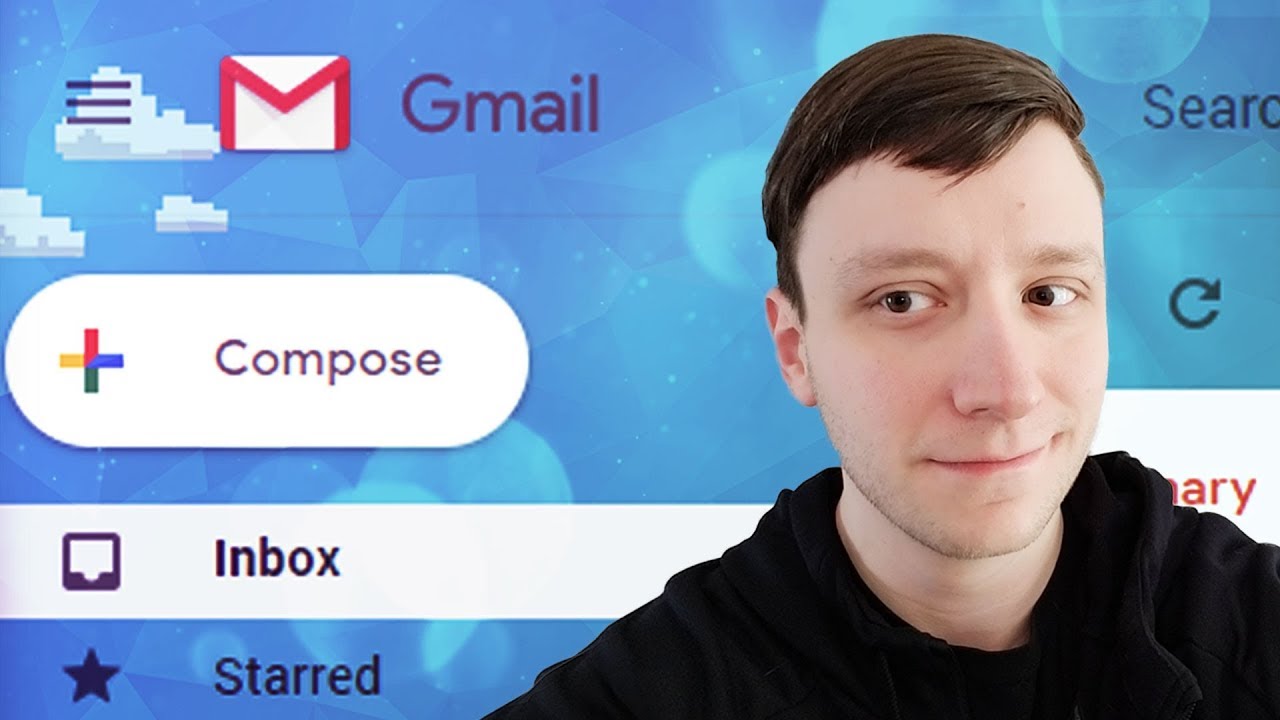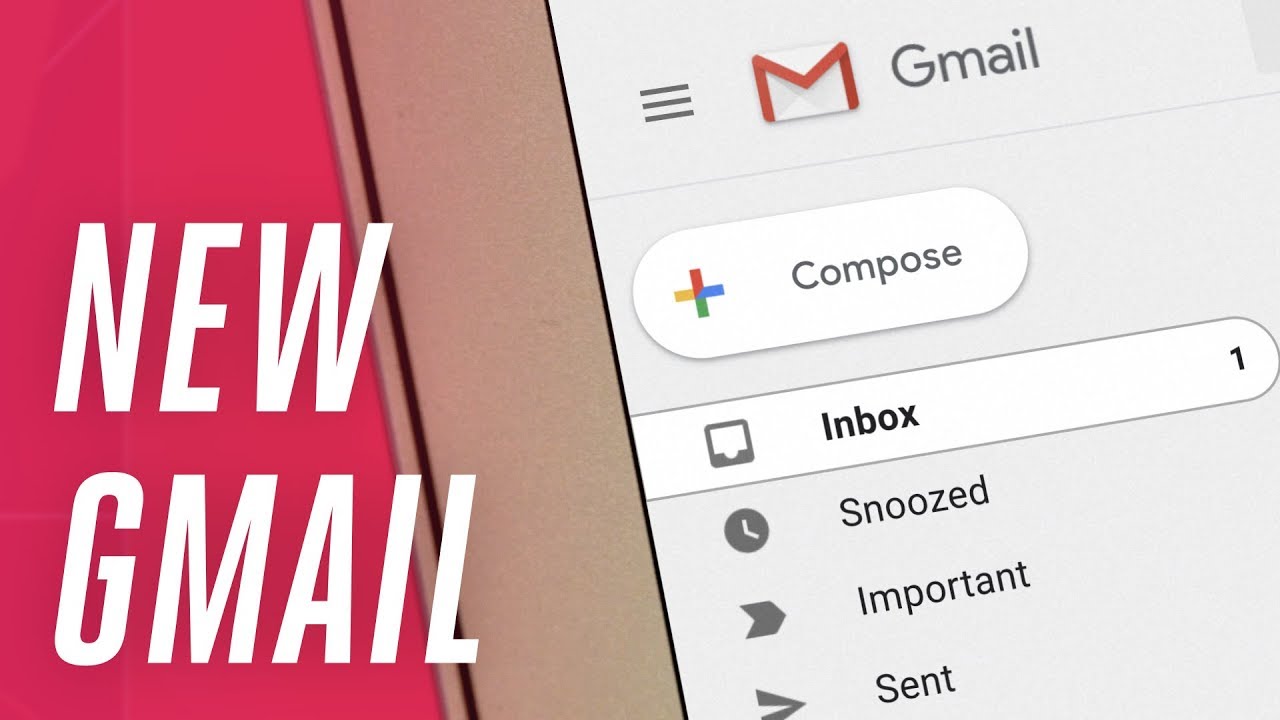Gmail’s Makeover And How It Can Influence Your Working Habbits
Google gave Gmail a big refresh that will change the way you interact with it and help you even more than before. As first reported by The Verge, the upgrade was revealed in a message from Google to administrators of G Suite accounts. The message stated that the changes would be coming to consumer Gmail accounts, as well as G Suite accounts.
The redesigned Gmail web interface is focused on quick productivity actions. Google is introducing features such as attachments chips, hover actions, and hover cards to make the static inbox experience more interactive without the need for multiple clicks. Google is also surfacing several labs features that were previously hidden in Settings > Labs, like canned responses, the ability to create multiple inboxes, and a preview pane to customize your preferences for different inboxes.
According to Fox News, Gmail is getting deeper G Suite interactions to directly create and edit Google Calendar invites, send notes to Google Keep, and manage to-do items in Tasks. “Google is also releasing new Tasks mobile apps for Android and iOS for adding and editing tasks from your smartphone to manage in Calendar and Gmail. The Tasks app is available today in the iOS App Store and Google Play Store. Aside from the new-look web app and Tasks mobile apps, Google also announced new security features, including Gmail confidential mode, and expanded AI capabilities like smart replies and notification priority settings,” added Fox News.
Here are some of the main changes and how they will impact you
Smart Replies and Smart Filtering
New AI-powered features in Gmail, like Nudging, Smart Reply and high-priority notifications, can now help you spend more time on work that matters. With Nudging, Gmail will proactively remind you to follow up or respond to messages, making sure you don’t drop the ball.
Smart Reply offers pre-set, one-line replies for any email. The replies are not just standard answers, but customized according to each email, due to machine learning, that suggest responses to you, in order to help you save time. Moreover, two new features promise efficiency improvements through smart filtering. Notifications for high-priority messages help you focus on your most important work. From now on, Gmail will pay attention to frequent newsletters and suggest you give them the boot by unsubscribing if you stop opening them.

Protection from risky emails
Built-in Information Rights Management (IRM) controls also allow you to remove the option to forward, copy, download or print messages. This helps reduce the risk of confidential information being accidentally shared with the wrong people. Confidential mode will begin to roll out to consumer Gmail users and a limited number of G Suite customers in the coming weeks (broader rollout following).
Moreover, the redesigned security warnings within Gmail are simpler to understand and give a clear call to action to employees. These bigger, bolder warnings will help you be even more informed when it comes to potentially risky email.
“When you compose sensitive email you can remove options to forward, copy, download, or print the messages. The option to protect your outgoing email with two-factor authentication — the recipient needs to log into their own email and click to receive an unlock code via SMS text to read the message you sent could help you sleep better at night if you later discover their email account was hacked,” wrote Digital Trends.
Icons for Action Buttons
In the old Gmail interface, you’ll find the action buttons in the inbox along with a text label. In the new interface, Google has turned these action buttons into icons — you can’t read any text labels anymore. Also, this new icon menu has got two additional actions for quick access: Mark as read/unread and Snooze.
New Sidebar
It shows icons of other Google services like Calendar, Keep and Tasks. Tapping any icon expands the sidebar allowing you to quickly access your calendar entries, notes or tasks synced to your Google account. Any changes you do in these apps is synced back to the cloud and is instantly accessible on your other devices. You can also access third-party Gmail add-ons from the same side panel.
New native offline capabilities in Gmail on the web can help you work without interruption when you can’t find Wi-Fi. Search, write, respond, delete, or archive up to 90 days of messages, just as you would working online, but offline.
You can use Tasks to create tasks and subtasks, and even add due dates with notifications to help you stay on track. And because Tasks closely integrates with G Suite, you can simply drag and drop an email from Gmail into Tasks to create a to-do. Tasks with due dates can also appear in your Calendar. You can download the new Tasks mobile apps from the Google Play Store or iOS App Store today.
Different Display Modes
According to Economic Times, Google has added three view modes: default, comfortable and compact. Default view is ideal for large screens where you can open the preview of attachment in an email right from the inbox. This means you don’t need to open the email itself. Comfortable view is great for laptop users – it has large text which is easy to read sans the preview option of the default view. Compact view is the same as before.
10 Less Known Facebook Features That Help Marketers
The most loved and used social media platform is changing so fast that is hard to keep track of all of its novelties. Social media specialists are spending more and more time online reading and trying all about the new changes in order to bring them and explain them to their clients and followers.
This is the main reason we decided to focus today on Facebook and show you some of the most important features you, as a marketer, shouldn’t forget to focus on when it comes to your business Facebook page. Especially because they tend to be forgotten, while they have an important role of their own. In no particular order, here they are:
- The download your Facebook history for business analytics option. You will have your entire Facebook history at your disposal, finding: review all the posts, photos, and videos you’ve shared; your messages and chat conversations; past info from the About section of your profile; ads you’ve clicked on; historical data, facial recognition data,etc.
-
- Travel agencies and tourism boards could let people explore certain places in VR before buying their tickets.
- Real estate companies could let potential buyers look at houses in VR before actually visiting the houses.
- Furniture companies could let customers “try out” furniture in their homes before purchasing.
- Clothes retailers could let customers “try out” clothes and chat with friends about them before buying, or even let them customize their avatars with their clothes.
- Education institutions and online learning platforms could let students attend classes together.
Facebook Spaces is a virtual reality (VR) app developed by Facebook that lets you invite and interact with up to 3 of your Facebook friends using a VR device. Right now, you can download Facebook Spaces for Oculus Rift or HTC Vive . Once you open Facebook Spaces in VR, you’ll be asked to take off your headset and log into your Facebook account.
For brands’ representatives this feature can be easily used, as Buffer Social says:
3. Free Images for Ads
When you create a Facebook ad, you can choose from a searchable database of thousands of free stock images from within the Facebook image library.
4. Prioritize Who to See First
Changing your news feed preferences gives you control over what appears in your news feed. To choose which posts you want to see first in your news feed, click the arrow in the upper-right corner of the page and choose News Feed Preferences from the drop-down menu. Then click Prioritize Who to See First. This feature allows you to select from both personal profiles and business pages that you’re following so their updates get visibility in your news feed. You can also choose to unfollow people so you stop seeing their updates without unfriending them. If you find that your news feed is too full of updates from groups, you can also mute them by unfollowing updates from them.
5. The Camera Effects Platform
This feature allows you to use trackers, data, animation and more to create interactive, shareable effects that respond to people and objects in their surroundings. Through the platform developers can create frames, masks, and special effects for the Facebook camera. The two main products on this platform are Frame Studio and AR Studio.
It’s the place where people can browse and find Messenger bots, nearby places and businesses to message. Organized by category, recent activity and featured experiences, Discover complements existing entry points, including advertising to Messenger Codes, me.me links and plugins. The Discover tab can be located in the lower right-hand corner of the Messenger home screen and will enable users to browse recently visited businesses, featured experiences as well as bots and Pages. The bots are categorized and listed under various categories for easier access.
Facebook has also added chat extensions to the Messenger app that allow multiple people to chat with the same business at the same time. This allows users to directly add a bot to a group thread and share the conversation with other users in the group. Moreover, The Discover tab works with new parametric Messenger Codes, where people can scan such codes through the Messenger camera and link to a specific brand or business.

7. Relevance Score
Relevance Score metric is a measure of your Facebook ad’s effectiveness and the equivalent of Google’s AdWords Quality Score, in their ad reporting dashboard. This new score is an important ad quality signal that will affect both your ad delivery and the cost you pay for your Facebook campaigns. Facebook will use feedback from ad viewers to determine this score on a scale of 1 to 10, with 10 being the highest possible score.
According to Facebook’s statements, the new feature can lower the cost of reaching people (the higher an ad’s relevance score is, the less it will cost to be delivered). Moreover, bid matters too. “For instance, if two ads are aimed at the same audience, there’s no guarantee that the ad with an excellent relevance score and low bid will beat the ad with a good relevance score and high bid. But, overall, having strong relevance scores will help advertisers see more efficient delivery through our system. It can help advertisers test ad creative options before running a campaign. Advertisers can test different combinations of image and copy with different audiences, and learn which combinations offer the highest relevance scores”.
At the same time, the feature promises to help optimize campaigns already in progress. While ad campaigns are running, advertisers can monitor their relevance scores.
8. Smart Replies for Pages
Facebook intends to help small businesses automate some of the customer support processes. Using AI, Smart Replies helps Page owners to respond to the most frequently asked questions that they receive, such as business hours, directions, and contact details. “The AI would grab information from the Pages, detect the questions asked, and reply with the appropriate information. It can help free up some of your time for you to create high-quality content and engage with your audience on social media. As the AI would grab information from your Page, it’ll be great to keep your Page information updated,” wrote Social Buffer.
9. Competition monitor
On Facebook Insights the Posts’ area, you will find “Top Posts from Pages You Watch”. There you can track other pages, from partners, competitors to friends. You can take a look at the metrics and spot the likes, posts and engagement on these pages. Moreover, Facebook will suggest you some pages to follow. You can also type in the names of brands you want to check out and add them to the list.
10. The Auto-optimization Rules
You can set up four different consequences if the conditions have been met: turn off the ad campaign, ad set or ad; send notifications to the ad manager; adjust budgets and manual bids. In order to set up an automated rule set, select a campaign, ad set or Facebook ad and go to the editing panel (Icon on the right side of the reporting table). Next, click on the “Create Rule” button to create a new rule set. You can create rules by selecting some conditions and telling Facebook what to do once the conditions are met.


